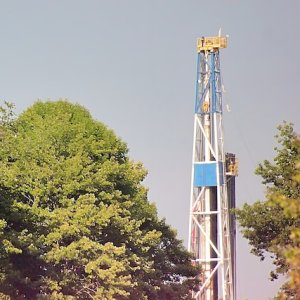Municipalities set to Benefit from Energy Efficiency

The urban landscape is at the epicenter of human development and cities are the depository of cultural vibrancy and economic growth. The world is riding the largest wave of urban growth in history; more than half of the world’s population lives in towns and cities, and by 2050 this number will swell to a staggering 5 billion. Mexico is no exception, and restraint is sorely needed to keep this conspicuous consumption in check. CONUEE has worked tirelessly to establish a green market with efficiency at its core. “We have been working for the past 22 years on establishing standards. We already have 29 energy efficiency norms, close to 50 accredited labs, and six certification organizations,” Odón de Buen, Director General of CONUEE boasts. Within this plethora of green tools, there is one market in particular that stands to benefit above all: municipalities.
Public lighting accounts for 15% of the municipal budget. In order to incentivize efficient systems at this level, CONUEE has implemented a program that traces its roots to the previous administration, the National Project for Energy Efficiency in Municipal Lighting. “It has resources of MX$120 million, to be used for rebates for municipalities, in a fund operated by the Ministry of Energy,” de Buen describes. In this area, CONUEE’s work consists of promoting the implementation of NOM-certified equipment with municipalities seeking to change their systems and maintain high quality. “Once the new lamps are installed, the Ministry of Energy’s fund pays up to 15% of their value, with a limit of MX$10 million per municipality,” he adds. Shockingly, at the beginning of the administration no municipalities had received any benefits, but this is rapidly changing with 11 municipalities having gained the support and an additional 30 registering to obtain the funds. So far MX$45 million have been used and the program has broadened its scope to help municipalities define their purchasing processes. “The challenge we face is making sure that every product is certified so we must ensure that every municipality that receives the funds demonstrates that the products comply,” de Buen explains.
There is no denying that aiding municipalities in their pursuit of green practices is a difficult task. During the revision of submitted proposals by the municipalities, the Ministry of Finance has asked CONUEE for support because many municipalities propose projects but never complete them, or do not achieve the expected ROI. “Most municipalities have high levels of debt, and they partly depend on federal contributions to pay loans, but in many cases they have already been allocated,” de Buen comments. There is a clear guideline that municipalities must follow to register for the energy efficiency program, and according to the law, CONUEE cannot give advice to municipalities. “We review their applications, identify the systems they have at the time, assess their proposals, and finally determine if they are bankable,” de Buen delineates. At a municipal level, installing efficient lighting system is not enough, since a full immersion in energy efficiency is crucial. “Our other challenge relates to building standards and their acceptance by municipalities,” de Buen states
These must be incorporated into the local construction codes. “CONUEE is working arduously on getting banks to consider energy efficiency and construction standardsrelated activities for their loaning portfolio, especially for SMEs.” Additionally, FIDE is making notable efforts in financing, but its focus is on equipment replacement, rather than installations that include HVAC. “Getting banks involved would require schemes similar to those we have for standards, that is, verifications, units, evaluation and estimation of savings, and certification of the companies that present proposals,” he points out.
The recent governmental budget cuts have provided CONUEE the chance to promote medium and small energy efficiency projects. In Mexico the ESCO scheme has proven to be popular in the private sector, and de Buen hopes to replicate this success in the public sector. “At the moment, we are slowly working on developing an ESCO market in the government sector, for which the prestigious law firm Baker & McKenzie - paid by GIZ - has helped in drafting a standard contract.” The budget cuts are a useful driver for this initiative and according to de Buen, the ESCO market for federal buildings is estimated at MX$300 million (US$20 million) a year, so the savings would surpass this amount. While other governmental agencies lament the fact that their programs will feel the pinch of these cuts, CONUEE shines a light on a new path that will lead to greener, energy efficient markets.



















